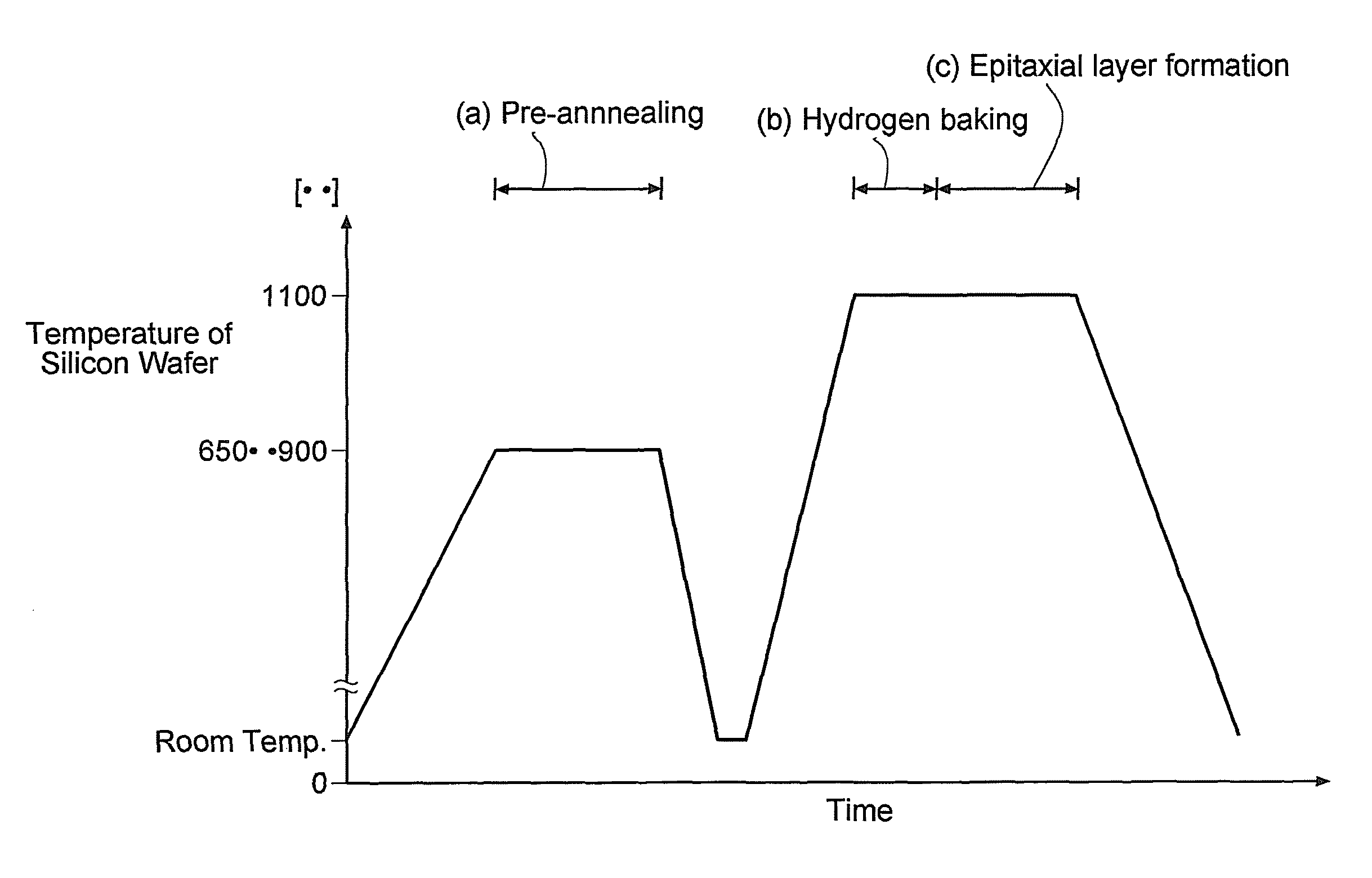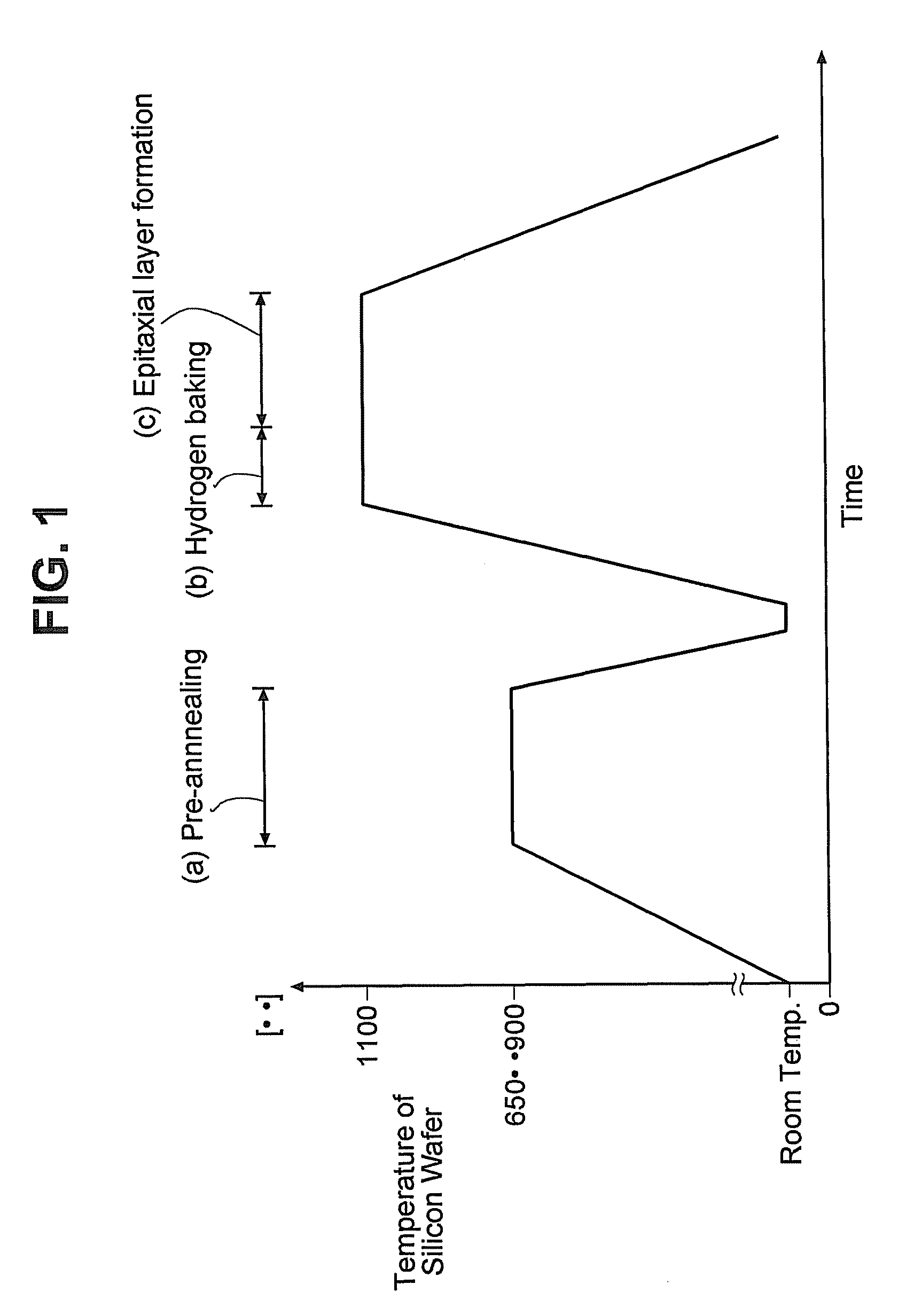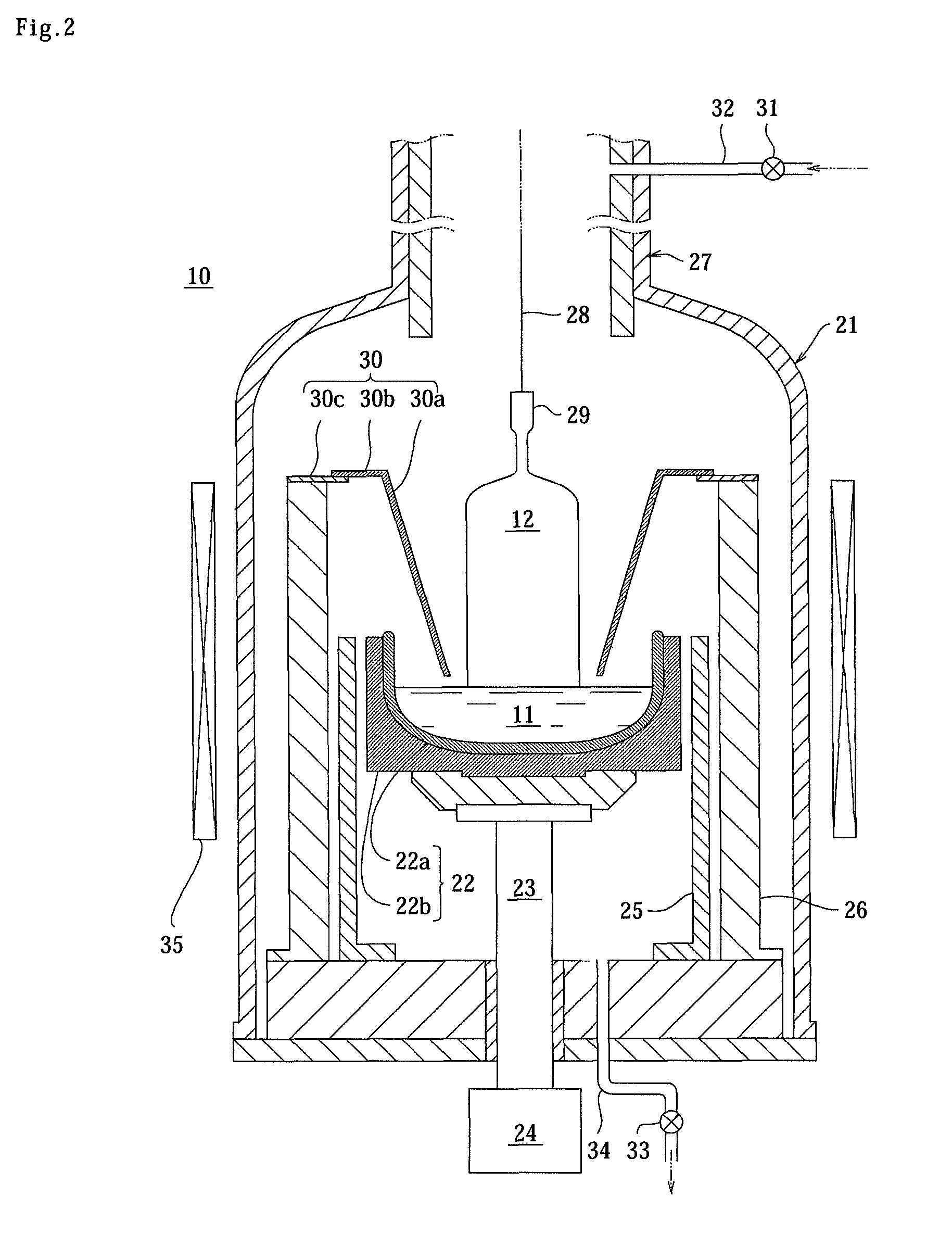Method for manufacturing epitaxial wafer
a manufacturing method and technology of epitaxial wafers, applied in the field of epitaxial wafer manufacturing, can solve the problems of reducing the life of the device, increasing the leak current or the decrease of the lifetime of the device, and complicated process, so as to prevent the generation of excessive amounts of oxygen precipitate nuclei, reduce the rejection rate, and suppress the generation of excessive oxygen precipitate nuclei
- Summary
- Abstract
- Description
- Claims
- Application Information
AI Technical Summary
Benefits of technology
Problems solved by technology
Method used
Image
Examples
first embodiment
[0033]A first embodiment of the present invention will be described. As shown in FIG. 2, a method for manufacturing an epitaxial wafer of the present invention includes: a step of pulling a silicon single crystal 12 from a boron-doped silicon melt 11 in a chamber 21 based on a CZ process; and a step of forming an epitaxial layer on a surface of a silicon wafer (not shown) sliced from the silicon single crystal. In the method for manufacturing an epitaxial wafer, the silicon single crystal 12 is allowed to grow while passed through a temperature region of 800 to 600° C. in the chamber 21 in 250 minutes or less and 180 minutes or more during the pulling step. The grown silicon single crystal 12 has an oxygen concentration of 10×1017 to 12×1017 atoms / cm3 and a resistivity of 0.03 to 0.01 Ωcm. The silicon wafer is subjected to pre-annealing prior to the step of forming the epitaxial layer on the surface of the silicon wafer sliced from the silicon single crystal, for 10 minutes to 4 hou...
second embodiment
[0042]A second embodiment of the present invention will be described. A method for manufacturing an epitaxial wafer of the present invention includes: a step of pulling the silicon single crystal 12 having the diameter of 300 mm from the boron-doped silicon melt 11 in the chamber 21 through forced cooling based on a CZ process; and a step of forming an epitaxial layer on a surface of a silicon wafer sliced from the silicon single crystal. That is, in the second embodiment, as shown in FIG. 3, forced cooling is carried out with the water-cooling type cooling device 36 placed in the chamber 21. The silicon single crystal 12 is passed through a cooling cylindrical member 37 placed in the cooling device 36 and allowed to grow while passed through a temperature region of 800 to 600° C. in the chamber 21 in less than 180 minutes and 120 minutes or more during the pulling step. The grown silicon single crystal 12 has an oxygen concentration of 10×1017 to 14×1017 atoms / cm3 and a resistivity...
example 1
[0046]The CZ furnace 10 for growing the single crystal grows is shown in FIG. 2. To be specific, the crucible 22 for retaining the silicon melt 11 is placed at the center of the main chamber 21. The crucible 22 includes a quartz container 22a and a graphite container 22b surrounding the container 22a and is connected to a crucible driving unit 24 for rotatingly moving the crucible 22 up / down through a pivot 23. A heater 25 and a heat insulating tube 26 are concentrically arranged around the crucible 22. The silicon melt 11 prepared by melting the single crystal with the heater 25 is filled in the crucible 22.
[0047]A cylindrical pull chamber 27 is connected to the upper end of the main chamber 21, and a seed pulling unit (not shown) is provided at the upper end of the pull chamber 27. A wire cable 28, from which a seed crystal 29 is suspended, is set in a rotatable and vertically movable state. The silicon single crystal 12 can be allowed to grow from the lower end of the seed crysta...
PUM
| Property | Measurement | Unit |
|---|---|---|
| temperature | aaaaa | aaaaa |
| resistivity | aaaaa | aaaaa |
| temperature | aaaaa | aaaaa |
Abstract
Description
Claims
Application Information
 Login to View More
Login to View More - R&D
- Intellectual Property
- Life Sciences
- Materials
- Tech Scout
- Unparalleled Data Quality
- Higher Quality Content
- 60% Fewer Hallucinations
Browse by: Latest US Patents, China's latest patents, Technical Efficacy Thesaurus, Application Domain, Technology Topic, Popular Technical Reports.
© 2025 PatSnap. All rights reserved.Legal|Privacy policy|Modern Slavery Act Transparency Statement|Sitemap|About US| Contact US: help@patsnap.com



